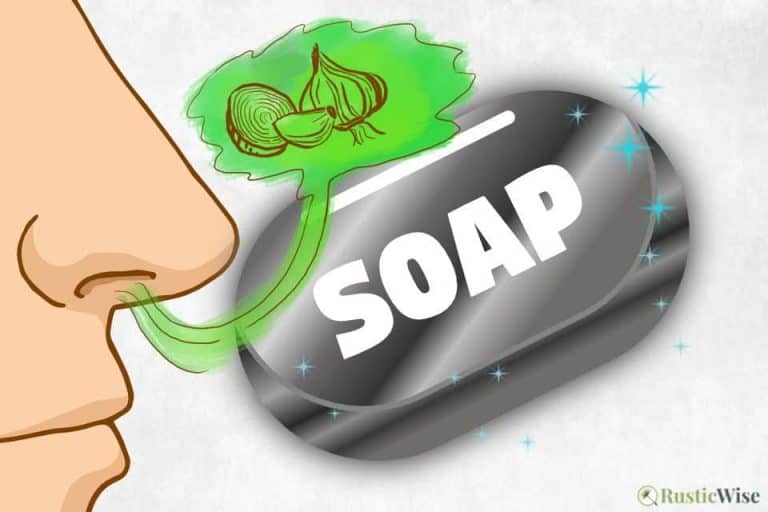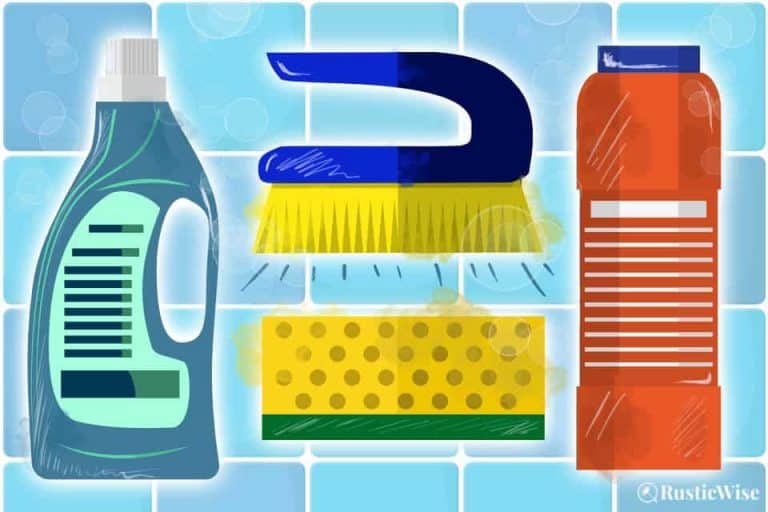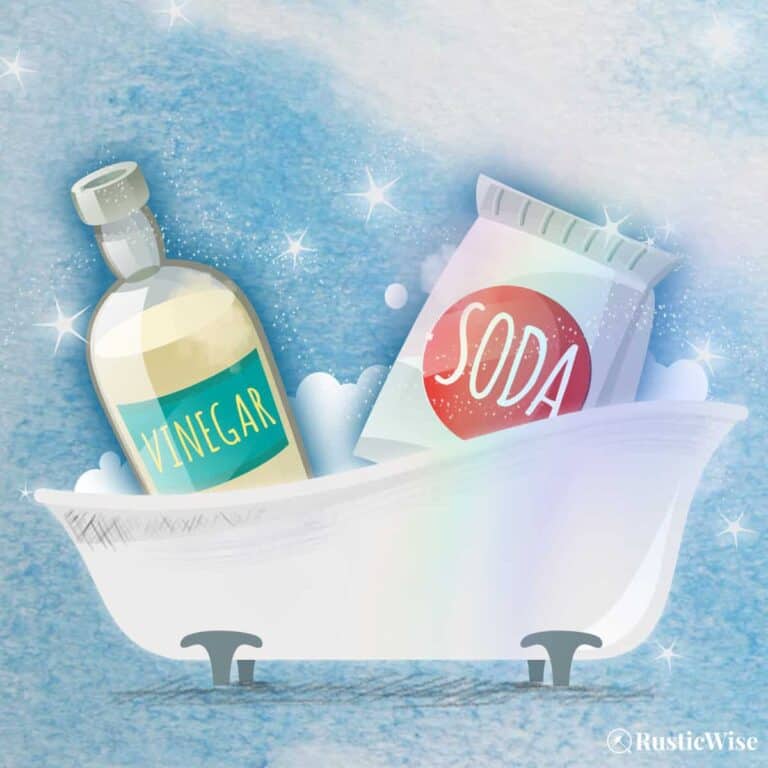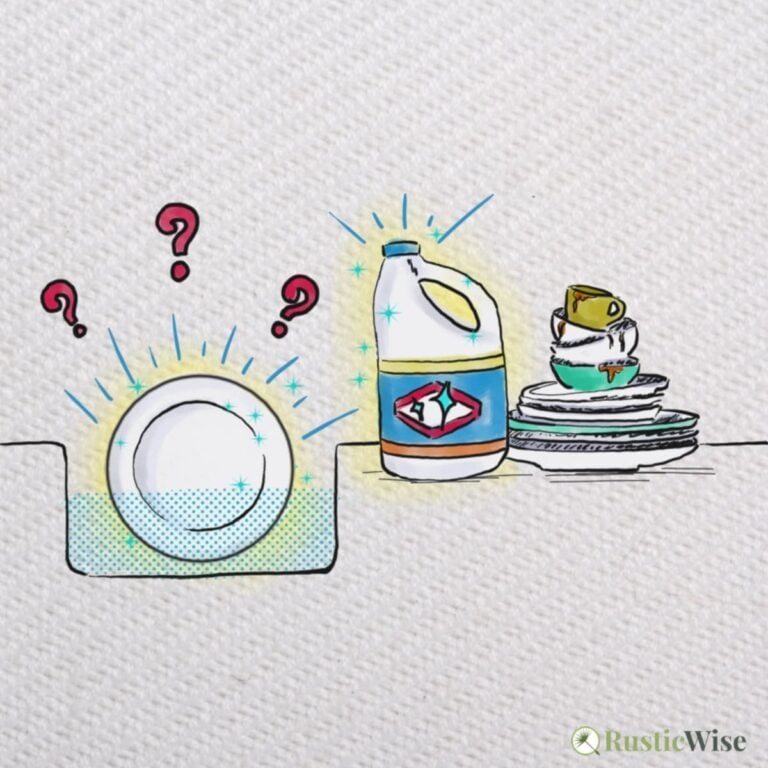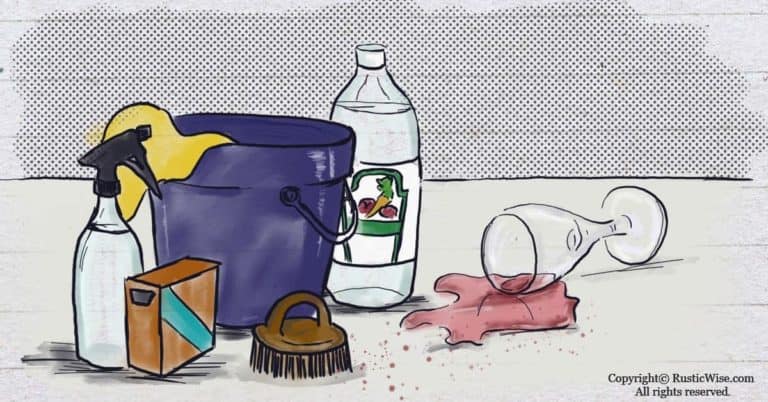Can You Put Bleach in Your Toilet Tank? 4 Bad Things That Can Happen
If you’re looking to clean your toilet tank, the first product that comes to mind is a bottle of household bleach. After all, it disinfects and cleans, right? Not so fast.
Can you put bleach in your toilet tank safely? Simply put, no, it’s not a good idea to put chlorine bleach in your toilet tank. Bleach is a corrosive cleaning agent that can damage rubber and plastic components in the tank, and eventually create rust stains on metal bolts. Over time, bleach may cause leaks in your toilet—something nobody wants!
Let’s learn more about what bleach does to your toilet tank, why it’s important to clean your tank periodically, and how to do so safely.
The properties of bleach
Regular chlorine household bleach is one of the most caustic cleaning products. With a pH of roughly 11 to 13.5, this makes it a strong alkaline, or base.
If you recall, the pH scale ranges from 0 to 14, with pH 7 being neutral. Values under pH 7 are acidic, while values above are alkaline or basic.

Keep in mind that each number change represents a 10-fold change in the alkalinity or acidity of the solution. For example, bleach with a pH of 13 is ten times more alkaline than a solution of pH 12.¹
The active ingredient in liquid bleach is a sodium hypochlorite solution which ranges in concentration between 2 and 10 percent. The stronger the concentration, the more cleaning power bleach has.²
So what does that mean for cleaning? As a strong base, bleach effectively removes mold, mildew, and disinfects. As a strong disinfectant, bleach kills bacteria and disease-causing pathogens.
For these reasons, you might think this solution is a shoo-in to clean your toilet tank. Unfortunately, while bleach is safe to use on porcelain, it is NOT good for the rubber, plastic, or metal components of the toilet cistern.
Bleach safety: Never mix bleach with other toilet cleaners, or household cleaners such as ammonia. Mixing bleach with other cleaners will create toxic fumes. Keep in mind that bleach may dull certain metals on sinks and faucets. It can also dull or etch some porcelain enamel surfaces. Keep bleach away from aluminum as it may discolor it.³
Why you need to clean your toilet tank
While we all know the importance of keeping the toilet bowl and exterior surfaces (such as the toilet seat clean), we often neglect the toilet tank.
The toilet cistern houses the mechanical components of the toilet. A clean and functional tank ensures the toilet runs smoothly.
Since the tank is filled with water, it creates a moist environment ideal for mildew and mold to thrive in. And if you have hard water, the tank will develop hard mineral deposits with time.
A periodic tank cleaning keeps mold, mildew, and any rust at bay. Besides, it’s also a good idea to check in on the internal toilet components to see if any require repair.
How often should you clean a toilet tank?
Most plumbing experts recommend cleaning the toilet tank every 6–12 months. Doing so once or twice a year will keep the inside of the tank spiffy and running smoothly.
So add this to your list of regular maintenance cleaning tasks.
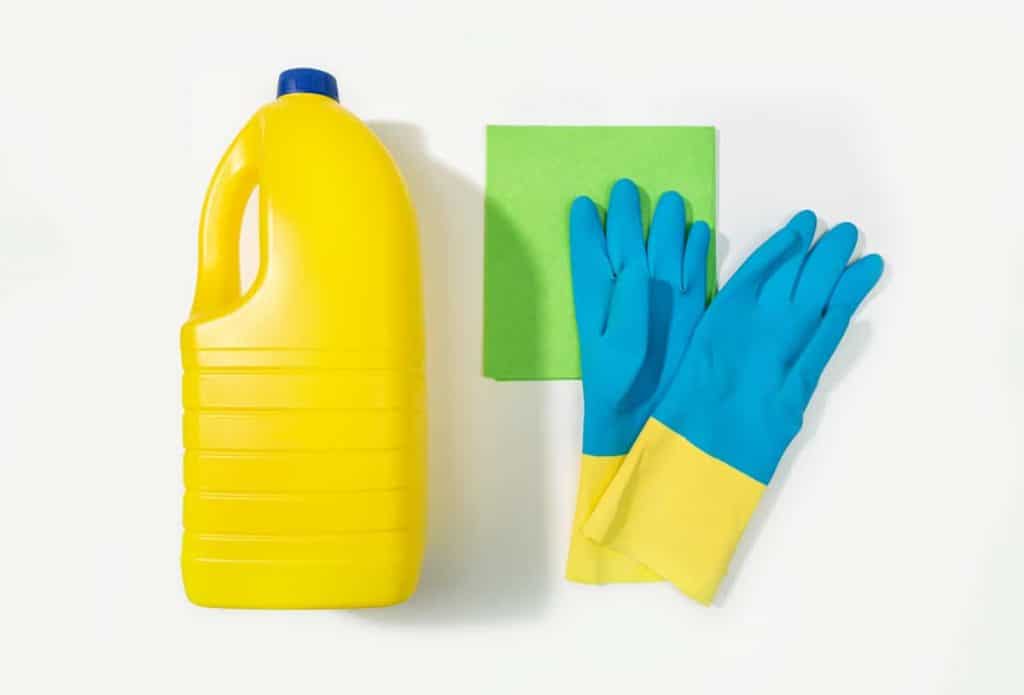
4 reasons you should NOT put bleach in your toilet tank
Household bleach for cleaning most commonly comes in liquid form. You can also find bleach tablets. Both liquid chlorine bleach and bleach tablets are no-nos in the toilet tank.
Bleach creates all sorts of problems in your toilet, starting with rubber components such as rubber gaskets. From there, it’s a domino effect—bleach will eventually damage plastic parts, and metal bolts, which will eventually rust and bring about toilet leaks.
Let’s take a closer look.
Note: If you have a dual flush toilet, the internal parts may look slightly different. But using bleach in the toilet tank will still do a number on the parts.
1. Bleach harms rubberized toilet parts
As a caustic substance, bleach quickly eats away at “weaker” materials first, such as rubber components.
There are many rubber components inside the toilet cistern, including rubber seals and gaskets, plus the toilet flapper (aka flapper valve). The flapper sits at the base of the toilet tank and lifts up and down to allow water to flow when the toilet is flushed.
The gaskets are located between the porcelain tank and the metal bolts.
2. Bleach may weaken the plastic fill valve and overflow tube
Besides rubber, plastic is also not immune to the effects of bleach. Plastic parts in a toilet include the toilet fill valve and the overflow tube.
The overflow valve and tube play an important role: it prevents extra water from flooding into the tank and splashing onto bathroom flooring.
The toilet fill valve refills the toilet tank with each flush.
These are vital components which you wouldn’t want to break down.

Credit: Deposit Photos
3. Bleach can corrode metal bolts
Next to go after rubber and plastic parts are the metal bolts. Metal bolts are the glue that holds everything together.
Over time, bleach corrodes metal components which lead to weakening of the connections, and eventually toilet leaks.
4. Bleach may cause costly leaks
And of course, the last thing anyone wants is a toilet leak.
Leaks can occur in several places: from the toilet tank, the toilet bowl, the water supply line, or underneath the toilet.
While using liquid bleach or bleach tablets seems like a simple solution, it only leads to long-term damage and costly plumbing bills in the long run.
With regular use of bleach in the toilet tank, the rubber gaskets and seals, as well as the flapper valve, will deteriorate. Next, the metal bolts will begin to weaken and rust. This leads to toilet leaks which will require new toilet parts, and likely a pricey call to the plumber.
In worst-case scenarios, toilet leaks may damage flooring.
So, what should you use to clean a toilet tank?
To safely and effectively clean a toilet tank, use a natural product you likely carry in your pantry: white distilled vinegar. Or, a bleach-free disinfectant cleaner also works.
Vinegar is a mild acidic cleaning agent that removes hard mineral buildup and gently disinfects and deodorizes.
With regular cleaning of the tank twice a year, you can keep mold, mildew and hard mineral buildup in check. This also keeps unpleasant smells at bay!
You’ll need:
- Rubber gloves
- Stiff nylon cleaning brush or plastic scrubber (avoid anything metal which can scratch the surface)
- 2 parts white vinegar to 1 part water in a spray bottle (a bleach-free all-purpose spray also works)
- Combine roughly 2 parts vinegar to 1 part water in a spray bottle. Swirl to mix.
- Turn off the water supply line and drain the toilet tank.
- Spray the white vinegar solution along the inside of the toilet tank. Let it sit for 10–15 minutes to let the vinegar work its magic.
- Gently scrub the interior of the tank with a gentle scrub brush or plastic scrubber.
- Turn the water flow line back on. Refill the tank with water and flush the toilet. You may need to do this several times until any buildup is flushed and water appears clear.
Can you put bleach in your toilet tank? Final thoughts
Bleach is NOT a good choice for cleaning your toilet tank. The sodium hypochlorite solution in bleach will damage the rubber valves and seals, plastic tubing, and cause corrosion on metal bolts. Eventually, this leads to costly toilet leaks and maybe a hefty plumbing bill!
Bleach is also highly corrosive and simply not the best option for cleaning the tank or the bowl. Natural solutions like vinegar, baking soda, or borax combined with hot water help keep your toilet sparkling clean. Make cleaning the toilet tank twice a year part of your cleaning routine to keep nasty odors, mold, and mildew at bay.
Related questions
Does bleach damage toilet bowls?
Toilet bowls are made of porcelain, sometimes called Vitreous China. This material can withstand many types of cleaning products, including bleach.
Although bleach won’t damage the toilet bowl, it may not be the best option for cleaning and removing stains. Not only is bleach caustic, it may irritate eyes, skin, and it’s not something you want to inhale. When scrubbing the bowl, splashes often occur and bleach isn’t something you want damaging your clothing or getting into your eyes!
Vinegar and baking soda (along with a bit of elbow grease) work wonders to remove any buildup of rust, foul smells, and stubborn stains. Check out the most common types of toilet stains and how to remove each one.
Can you put Clorox in a toilet tank?
Clorox is a popular brand of bleach and toilet bowl cleaner. As noted above, any bleach (or cleaner which contains bleach) is not good for the long-term health of a toilet tank. Not only does it eat away at rubber and plastic components, it also causes metal bolts to corrode. Over time, your toilet may develop leaks.
👉 If you like this post, see other Timeless Cleaning Tips You Need To Know. 🌟
Would you like more timeless tips via email?
Fun tips to help you live an independent, self-sustaining lifestyle. Opt-out at any time.


References
- U.S. Department of the Interior, pH Scale, https://www.usgs.gov/media/images/ph-scale-0. Accessed May 2022.
- Michigan State University, COVID-19 – Disinfecting with Bleach, https://www.canr.msu.edu/news/covid-19-disinfecting-with-bleach. Accessed May 2022.
- New Mexico State University, Selection and Use of Home Cleaning Products, https://pubs.nmsu.edu/_g/G304/. Accessed May 2022.

Author: Josh Tesolin
Josh is co-founder of RusticWise. When he’s not tinkering in the garden, or fixing something around the house, you can find him working on a vast array of random side projects.


